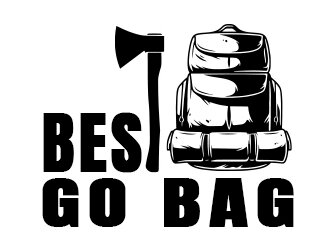Imagine trying to lift 1,160 pounds. Impossible, right? But over the course of a year, that’s the weight of food the typical American family of four throws away.
In fact, more than one-third of the food grown in the U.S. is never eaten. That wasted food is valued at approximately $408 billion. And about 95% of it ends up in landfills.
Considering the price of food these days and the number of hungry Americans, it almost seems criminal. In 2021, more than 10% of U.S. households were food insecure at some point during the year. Meaning they didn’t have enough food to meet their nutritional needs.
Today I want to discuss how important it is to avoid food waste. In addition to being the right thing to do, it can save a family of four about $1,500 each year. You could probably take a vacation with that money. And at the end I’ll give you 9 ways to avoid tossing food out.
Detrimental to everyone
Angelos Deltsidis is assistant professor in the postharvest physiology department of horticulture at the University of Georgia.
He said the amount of wasted food in America represents “a very large percentage and it’s detrimental to the producers and, of course, for the consumer.
“Very often people buy products that are perfectly good to be consumed and they end up throwing them out for various reasons.
“When food isn’t consumed the money and energy spent to plant the seeds, harvest, ship across the country goes down the drain.
8 tips & tricks
Following are 8 ways to avoid wasting food:
- Make a specific list of items needed before going to the grocery store and stick to it. Don’t be a victim of impulse buys that often end up being tossed out.
- Eat dinner leftovers for lunch the next day, and maybe even for dinner the next evening if there is still food left over. If you don’t think you’ll eat them before they spoil, freeze them.
- Go through the panty and freezer to find food items that are nearing their expiration dates and put a meal together with them.
- Eat before going grocery shopping. A hungry shopper is more likely to buy food that he or she will end up throwing out.
- Make fewer trips to the supermarket. The more trips made, the more food will be purchased and possibly the more will be thrown out.
- If food that’s nearing an expiration date won’t be used, donate it to a non-profit food pantry.
- Remember that “best by” dates on food packaging do not necessarily mean the food should be thrown out when that date is reached. It may be more about food quality than food safety.
- Look for alternatives to tossing out food you no longer wish to eat. For example, slightly overripe bananas can be used to make perfectly good banana bread.
Dealing with leftovers
Regarding those leftovers I mentioned, they’re not all created equally. Here’s what I mean:
A leftover piece of meat or fish can be wrapped up tightly in aluminum foil or plastic wrap and stay good for a few days in the refrigerator and much longer in the freezer.
But we should use a porous material such as parchment paper to wrap cheese. Why? Because cheese needs oxygen to stay “healthy” and taste its best.
Whole-wheat flour should not remain in a pantry for too long. That’s because oils in the wheat germ can go bad if they’re not kept cool. It will last for a number of months if stored in an airtight container within a refrigerator.
Unopened butter will last longer in a freezer (12 months) than it will in a refrigerator (4 months). But mayonnaise will stay fresher in the “warmer” part of a refrigerator (the door) than it will in the colder, inner part of the fridge.
Composting
Let me add a ninth suggestion for avoiding food waste, which is dependent upon the time you have and the space on your property. It’s composting.
Compost is a combination of greens that provide nitrogen and browns that provide carbon. It will add important nutrients your plants need, help retain enough water, and be a positive influence on the soil’s drainage.
You can keep it in good condition by monitoring the water, air, and temperature that interacts with it. Just designate an area for your compost pile and start piling it up.
Greens vs. browns
For your greens, you can include lawn clippings, plant prunings, houseplants, fruit peels, vegetable scraps, feathers or hair, bone meal, coffee grounds, hay or alfalfa meal, and others.
Your browns can consist of chipped wood, shredded paper, coffee filters, dry leaves, newspaper, sawdust, pine needles, cardboard egg cartons, aged hay or straw, and more. Try to have approximately twice as many greens as browns.
Moisture
Occasional rains should keep it damp enough, but if you get a lot of rain, cover the pile with a tarp. And if you get very little rain, you’re going to have to water it regularly.
The best way to monitor the moisture level is by grabbing a handful and squeezing. If a few drops of water come out, great. If more than that, it’s too wet; if less, it’s too dry.
Air
It’s very important for air to circulate in your compost pile. Place large sticks at the bottom of the pile in order to ensure an airflow from below, then add a brown layer followed by a green layer followed by a brown layer and so forth.
They’ll get mixed up when you use a pitchfork to regularly turn the compost and create air pockets where things have become clogged. But in the meantime it’s a good way to ensure that you’re getting enough of both.
Temperature
A composting thermometer will be helpful in keeping the temperature of your pile where it should be. It should have a stem of about two feet in length to reach well into the pile. If the temperature is between 80 and 100 degrees, your pile needs a pitchfork.
If it’s between 100 to 130 degrees, your material is being broken down pretty well. If it’s between 130 and 160 degrees, your pile is performing admirably and is even killing the seeds that could eventually produce weeds in your garden.
Break it down
Make sure the items in your compost pile are being broken down completely before you add them to your soil. If compost has not been broken down all the way when it enters the soil, it will steal the available nitrogen from your plants to break itself down. Without some of that much-needed nitrogen, your plants will not prosper as they should.
If like many people you throw away more food than you should, now’s a great time to rein that in. Hopefully the recommendations above will help in that effort.

